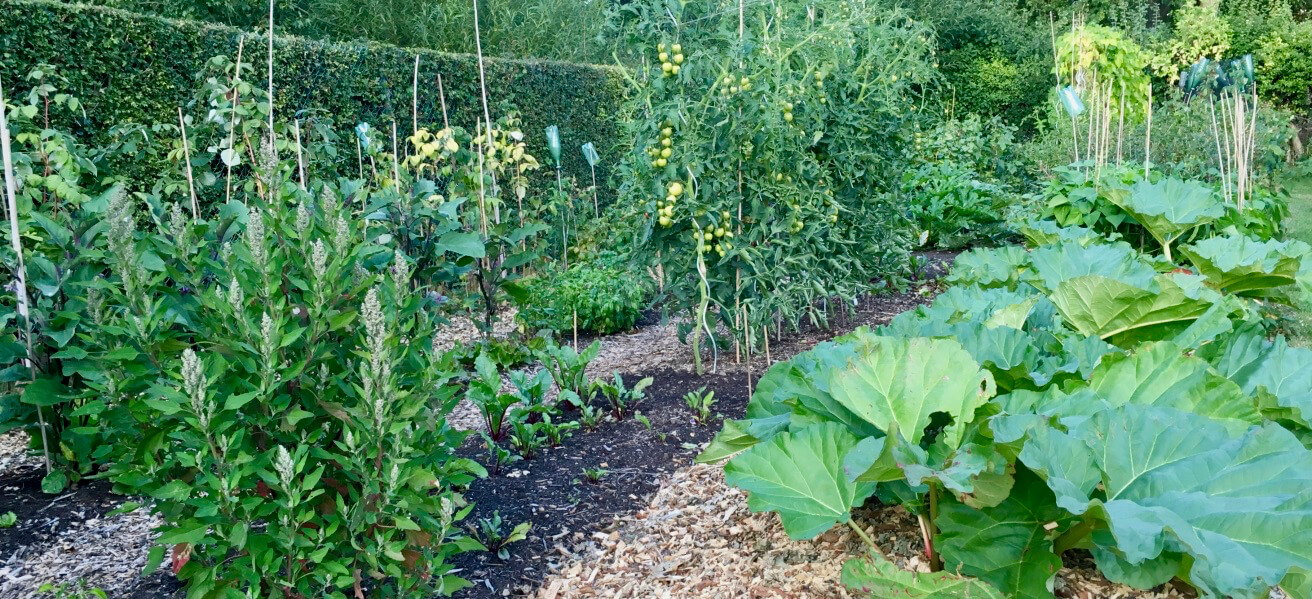
Pests & disease

Pests & disease: The Zerodig approach
Diversity
The Zerodig approach to disease and pest control is to achieve crop resilience through ecological balance. This means, above ground bio-diversity and nurturing the soil biome.
There are four principles we follow:
– maintaining a healthy soil biology,
– keeping plants healthy and resilient,
– preventing the arrival of pests and diseases,
– understanding pest life-cycles and acting on vulnerabilities.
We focus on prevention rather than cure. By the time there is a disease outbreak or pest infestation it is often too late.
By better understanding how disease and pest outbreaks are controlled and brought into balance in nature we are better prepared.
Healthy soil
Over hundreds of millions of years, an ecological balance has evolved in nature that gives beneficial micro-organisms the edge over disease causing micro-organisms provided the conditions are right. In market gardening, this starts with the soil. Plants evolved in collaboration with a host of soil micro-organisms that provide better access to minerals and water but also protection for plants from disease causing organisms.
Creating and maintaining the right conditions for the soil micro-organisms to effectively play their protective role requires our agricultural soils and practices to mimic the lessons from nature; and, for us – as market gardeners – to nurture the network of beneficial soil micro-organisms beneath our feet.
Growing food using many of our current agricultural techniques is very disturbing to both soil micro-organisms and nature’s ecological balance. This is especially true of tillage and all other forms of soil disturbance. A disturbed soil habitat makes it difficult for the beneficial micro-organisms and earthworm populations to re-establish themselves and often creates more favourable conditions for disease causing micro-organisms or pathogens. This is what we want to avoid.
Well structured soils should ideally be half air and half material. Half of the air passageways should be filled with water. This provides soil micro-organisms with the water they need to drink and the oxygen they need to breath. Disturbed soils lose structure and are often compacted with reduced levels of oxygen and water.
Many of the disease causing micro-organisms we would like to keep under control do well in the anaerobic conditions of soils with poor structure and that are compacted. Compaction is not just from farm machinery and livestock. Rain drops falling on the surface of a poorly structured soil will cause surface compaction. Climate change is likely to increase the severity of rainstorms and make the problem of surface compaction worse.
By maintaining good aerobic soil conditions with plenty of organic matter and a porous structure for roots and earthworms to use we also create the conditions where beneficial micro-organisms can outcompete disease causing micro-organisms.
Healthy plants
Keeping plants healthy and free of stress also enhances their ability to protect themselves from disease causing micro-organisms. Healthy soil biology will often mean healthy plants. Think of the soil as the place needed by the plant similar to the gut needed by our body. Nurturing the micro-organisms in our gut improves our mental and physical well being and – most importantly – boosts our immune system. For plants the same is true of the soil biology. If we nurture the soil biology so it has a large and well balanced population of many different types of beneficial micro-organisms we are much more likely to have healthy plants. Healthy plants that are more resistant to pests and diseases.
Giving plants a good start by using the best quality seed and carefully applied sound propagation practices helps them cope with the stress of their new environment when planted out. Planting out directly into undisturbed soil greatly enhances the opportunity for each plant to form a quick and lasting collaboration with the beneficial soil micro-organisms they need for a healthy disease free life.
Keeping pests and disease away
Nurturing the soil biome requires feeding the soil micro-organisms with organic matter. This is usually in the form of compost.
We need to be careful how we make compost and only apply compost that is free of disease causing micro-organisms. To do this we keep our compost aerobic and at a temperature of about 60 degrees centigrade for three days. Under such conditions most disease causing micro-organisms will be killed whereas beneficial micro-organisms will survive. That is as long as the temperature of the compost pile does not exceed about 75 degrees centigrade.
We can also use well made compost to make compost soil drenches and compost teas that are rich in the beneficial microbial life that plants need to stay healthy.
Pest life-cycles
A good understanding of pest life-cycles and their biological predators at different life stages can help control specific outbreaks.
There are four questions to ask: (1) Where are the eggs laid? (2) When do the eggs hatch? (3) Where do the larval stages spend their time? (4) When do larvae moult into adults?
We need to disrupt at least one of these points. There are often micro-organisms that can be applied through a compost tea as disrupters. There are also insect predator populations that can be introduced and nurtured as disrupters.
Disrupters need to be specific – beware of unintended consequences and harm to beneficial insects and micro-organisms. Many “biological” pesticides and fungicides are non-specific – sometimes called broad-spectrum – and will kill beneficial insects and fungi as well as the target pest. “Bio” does not always mean “safe”.

Recent Comments